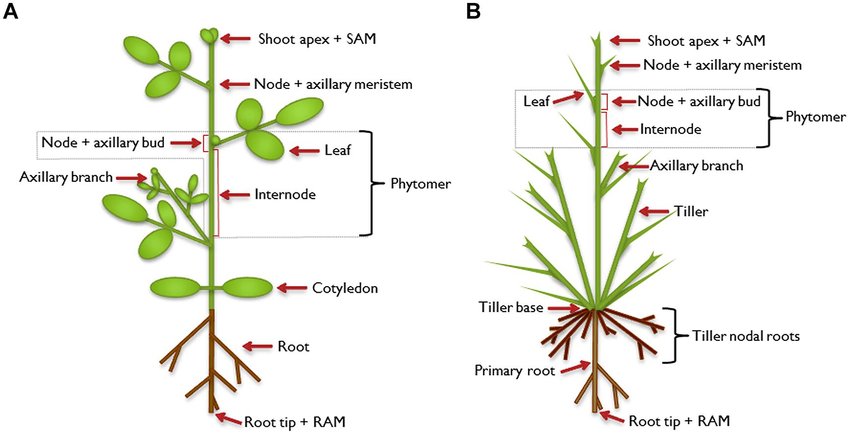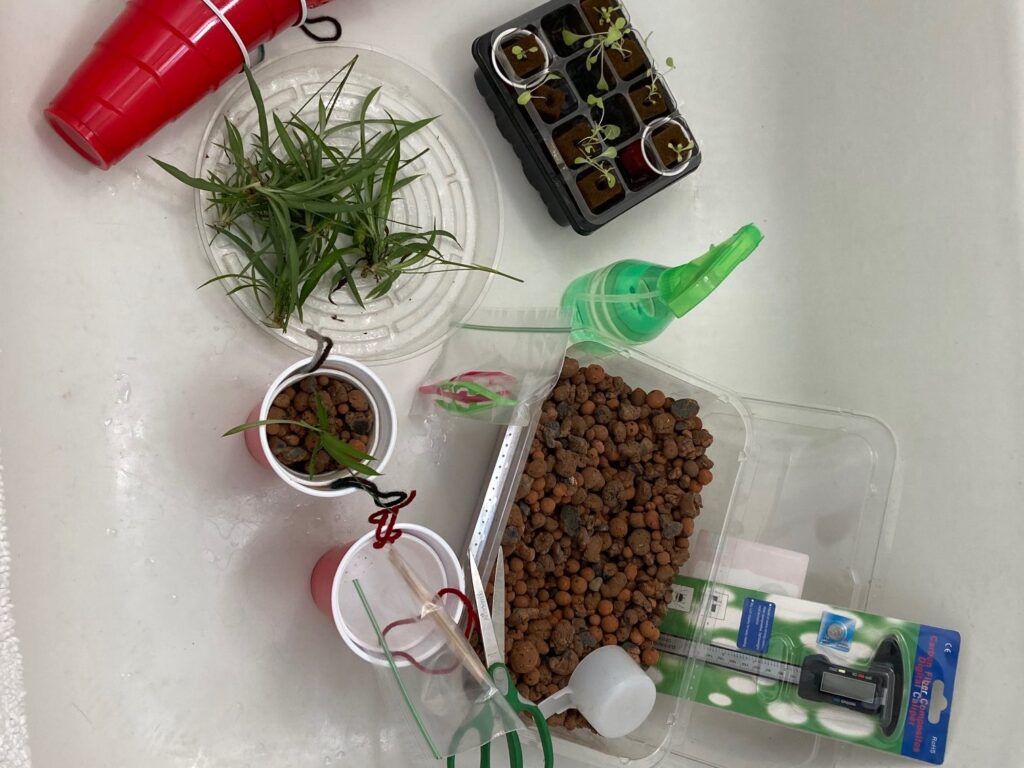
Have you ever wondered how plants recover from insect attacks, animal nibbling, wind, and storm damage? Some plants fully recover from these events while others only partly recover, and others don’t recover at all. Why? Most often, a plant’s recovery from physical damage is determined by where the injury occurs. If the plants are not broken or cut below their growing points, they can regenerate the cells and tissues needed and once again thrive.
When selecting your plants for this hands-on activity, make sure you have both monocot and dicot plants in your sample groups. Monocots and dicots plants are typically distinguished by whether they have one or two cotyledons, the mapping of leaf veins, arrangment of vascular bundles, root structure, and the number of floral petals.
As we explore how plants grow, we’ll look at how monocots differ from dicots in terms of where their growing points–meristem cells–are located. In the lab activity outlined below, we’ll identify where meristem cells are located on monocot and dicot plants. You’ll also learn how plants grow and recover from different types of damage.


Procedure
The recommended set up is shown at left: 4 plants for each treatment, three treatments for each crop (6 dicots and monocots) – no damage, damage below the growing point (below the cotyledon for dicot plants and at the soil line when the plant has six leaves for monocots), and damage above the growing point. For dicots you can damage the plant anywhere between 7 and 14 days for good results (showing no growth when damaged below the cotyledons and good growth when damaged above).
Plant treatments.
- Where will you damage the plants? Choose two places.
- When will you damage the plants? Choose a growth stage to damage (wait at least until the plants have emerged and have one true leaf). If you have two different damage treatments, you also need an undamaged control. Three treatments total.
- Choose how many plants will you use for each treatment. Number of plants in each treatment _____
- Number of seedlings for each treatment (add one to above number) ____
- Write up your experimental design.
When you design your experiment, you’ll want your investigation to be set up to answer the following questions:
- Which treatments grew back the best? Why? Was the growing point present in the stalk when it was cut in half?
- What did the regrowth look like compared to the controls?
- Why is it important to know where the growing point is?
- How could a farmer tell if a plant will regrow or not?
- How would you expect other plants to regrow, such as oats or tomatoes? Why?
Attached is a file–How do plants grow?–that you can download that provides more details and sample data tables to help you design, set up, and carry out your investigation. You can adapt the tables and modify the questions to fit your experimental design.
I’ll share my data with you in 1-3 weeks. Good luck with your plant investigations.
